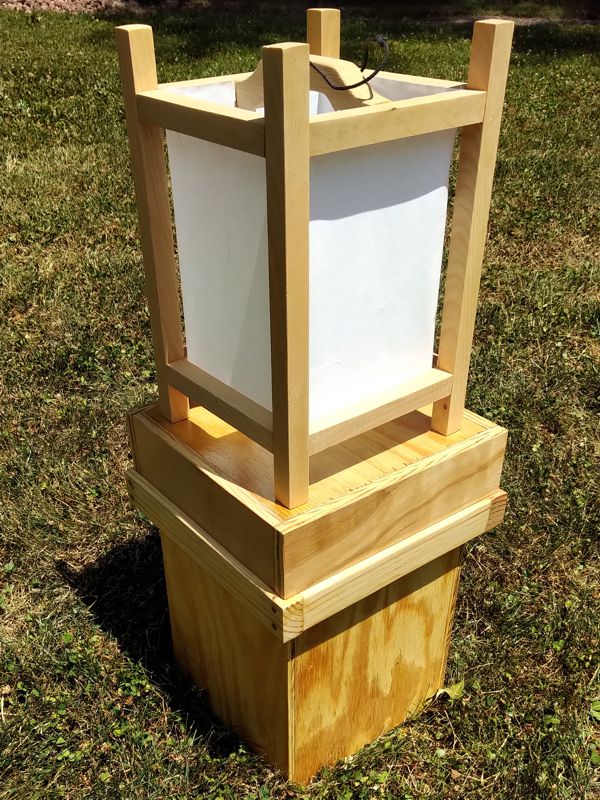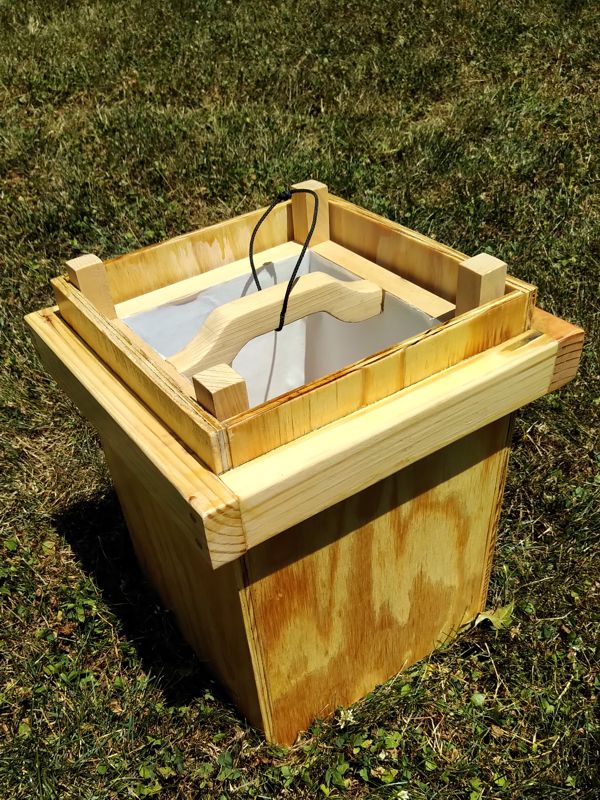A while back I made a Lantern Storage Box to hold the six wooden frame lanterns that I made for camp. I had previously made a couple of lantern storage boxes to protect a couple of large frame lanterns, but this smaller cypress lantern had no box in which to be stored. Now it does.
Anyway, it’s just an empty box, made of plywood. These were some of the last medium-size plywood bits I had around the shop. If I want to do more quick projects like this, I might have to start buying new plywood, despite the current inflated prices. The hardwood rim provides some reinforcement, and gives you something to grab as a handle.
There’s just enough room inside to insert this particular lantern. The lantern actually sticks up a little past the sides of the box. I just didn’t have four pieces that were tall enough. You might even notice that the thicknesses of the sides are not even the same. It hardly matters.
Once you are finished placing the lantern in the box, you can add the lid. The lid is tall enough that it rests on the handle rails instead of on the legs of the lantern. It’s not a very tight fit. Normally, I wind up making lids too tight-fitting, but this one is kind of loose. I might add some kind of closure so that the lid does not fall off if the box gets tipped over.
I put some polyurethane on the outside of the box, to protect the lantern if the roof of our storage trailer leaks or the box gets left out in the rain.









